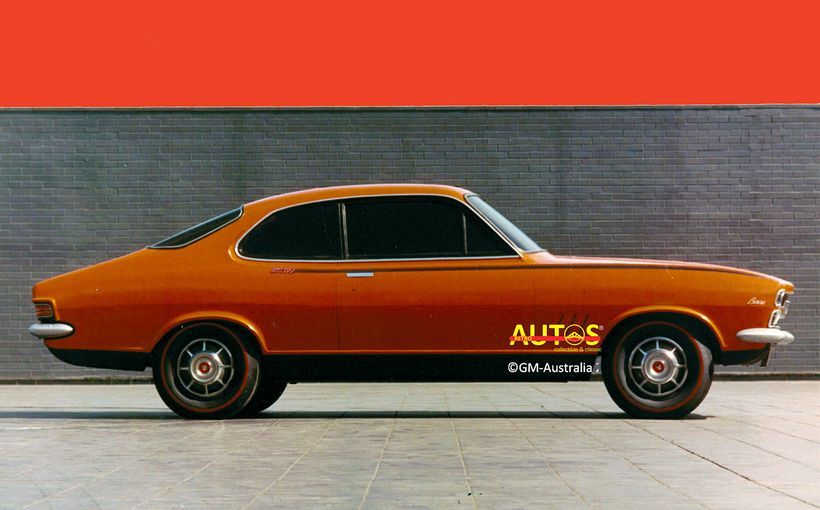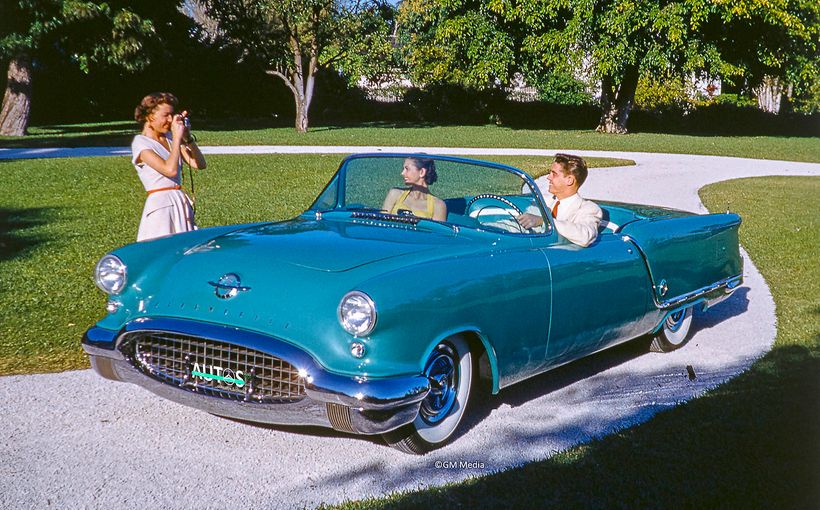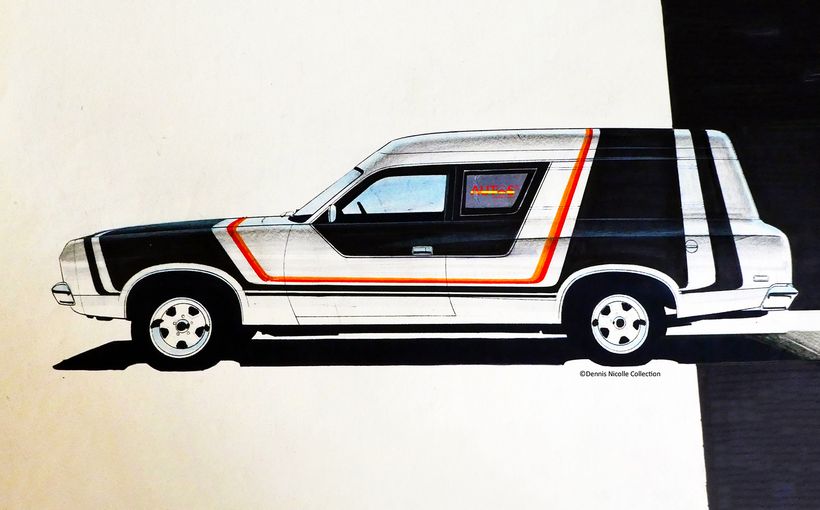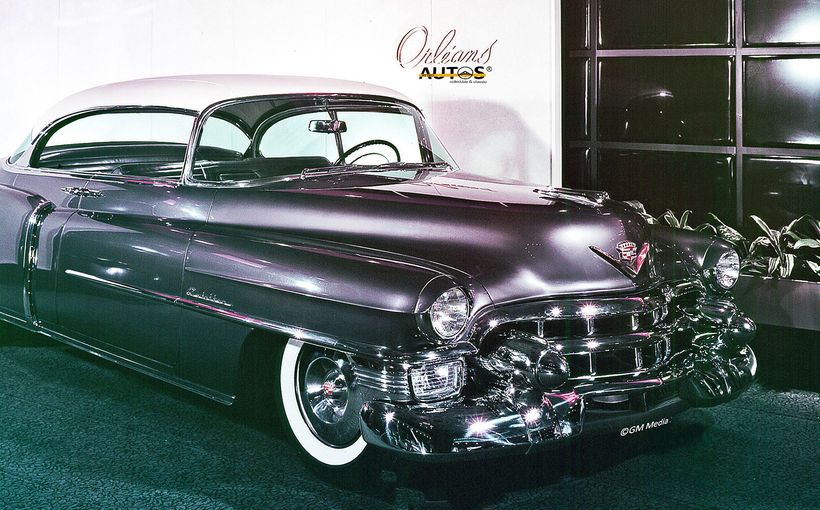Styling Updates: Better/Worse/Not Much Different? What’s your opinion?

Remember when any new car was big news? My mates and I would head to the local dealerships, on the bus or pushbikes because we were too young to drive, to see if the new models were really “all-new”, well executed “facelifts” or just by-the-numbers rearrangement of the badges. We’d argue about the changes. Did they make the cars look better, worse or not much different?
When the 1970 HG Holden was released, looking so similar to the 1969 HT, us smart mouthed teenagers walked into the showroom and asked a salesperson “When will you be getting the new Holden?” We reckoned it was a great joke. He suggested we “get out”, or at least that’s what I thought he said.

The American new model reveals, in the northern autumn, are a yearly automotive tradition in that part of the world. I always made sure that I reserved the annual “auto” editions of Popular Mechanix and Popular Science magazines at our local library, because they had extensive coverage and photos of the new models.


In the UK, Europe, Korea and Japan they have been more comfortable with longer time spans between re-freshes. The Australian car industry has been a mix of both long and short runs between changes. The 48-215 Holden was on the market almost five years before the FJ was released, while the 1969 VF Valiant was in showrooms for only 12 months.

It is Shannons Club members 120394 and FFalcon who reminded me of those great and not so great re-stylings in contributions they made to the discussion about the 1962 EJ Holden in a recent Retroautos. (Please see the link at the end of this story)
120394 summed it up nicely, especially about “facelifts”:
“Sometimes a re-style is a bit of a botch. Typically, it occurs when there is one update too many in my view. On the other hand, when a design is beloved like the 308/328 Ferrari or Ducati 916/996/998, you are caught between a rock and a hard place as the fundamental design language change that is required often offends the punters!”
And I thought “automotive facelifts? What an excellent idea for a story.”
In this first instalment of a two-part story, I’m rating a personal selection of American and European/UK facelifts. The next instalment, sometime in the future, will focus on my favourite Japanese, Korean and Australian mid-model updates.
I’ll be asking the question are they Better/Worse/Not Much Different? Feel free to join the discussion. Add your own American and European/UK contenders and we can all vote! Let’s start with the one of the best ever.
1965 and 1966 Pontiac

Pontiac’s design boss, Jack Humbert, was one of GM’s best. His mid-sixties cars were a GM highpoint. While Jack was in charge of Pontiac’s design studio the division won four Motor Trend COTY Awards. So, would you rate the facelifted ‘66 model as Better than the ’65? I do, by just a smidgen. It’s the cleaner grille that wins it for me. Humbert improved on perfection.

1967 and 1975 Fiat 124 Sport Coupe

Released in 1967, the Fiat looks great from the side and back. Trouble is, I cannot unsee the too-high headlights framed by bulbous fenders that tower above the bonnet. It was a good start, but the best was to come.
The 1969 update, pictured here in yellow, fixed the front end, and retained the side and back rear end design. Better.
Then they fiddled with it again for 1972. Did a stylist leave a baking tray in the clay model’s grille opening as a place holder and somehow forgot to remove it before it was signed-off for production? Plus, there is an exaggerated BMW-esque kink in the rear side window, covered in some sort of black vinyl. As you can guess, this is a Worse.


The Tri-Five Chevrolets

I come right out and say it, the 1956 facelift was the best. It was a deft improvement. The wide grille, set slightly lower, gives the Chevy a road hugging stance.
For me, the ’57 Chevrolet is too garish and stylised. GM’s design supremo Harley Earl tried to take a great shape and make it into a mini-Cadillac, with big fins, “dagmar” bumper inserts and twin rocket launchers on the bonnet. At best the 1957 Chevrolet is a Neutral compared to the 1955 model. And it was beaten in sales by the 1957 Ford Fairlane. Say no more.

1962 and 1974 MGB

Here is a lesson in how to ruin a timeless design. MG diehards will say that it was because of the US bumper regulations. Surely, it’s the job of designers to rise to such challenges and overcome them? Anyway, there are aftermarket rubber to chrome bumper conversion kits available should you feel the need. An easy rating: Worse.
1958, 1959 and 1960 Lincoln

It was the 1958 Lincolns that almost caused Ford boss Robert McNamara to shut down the Lincoln division permanently. The slanted stacked headlights, garish grille, tortured sheet metal and acres of chrome were not enhanced by the two facelifts, nor were sales. So, that would be two times Worse. Elwood Engel had a bit to do with these gargantuan cars and, ironically, it was his follow up 1961 Lincoln that saved the division. Then he went to Chrysler, which is where we are heading next.


1960 and 1961 Plymouth


The soaring rear fins of the 1960 model were beaten flat for 1961, resulting in a pleasant appearance. That’s where Chrysler’s design team should have downed tools and said “job well done”. But they could not resist the urge to create one of the most confronting grilles of all time. Shield your children’s eyes from this nightmare! An emphatic Worse. But wait, I’m not done with Chrysler.


1960, 1961 and 1962 Chrysler

The 1960 Chrysler was a pleasant enough looking car and had you thought that Chrysler’s designers would take notice of the sales decline of the 1958-1960 Lincoln and say “slanted, stacked headlights are not for us”, then you’d be wrong. They applied them two years in a row, and, for good measure, bent the metal on the front fenders into a very strange shape. At least they deleted the fins for 1962. Worse and Worse.

1960, 1961 and 1962 Imperial

Elwood Engel had lots to fix when he arrived at Chrysler in November 1961 as its new design supremo. The styling of the top-of-the-line Imperials for 1960 was typical of Virgil Exner, Engel’s recently sacked predecessor. A speedboat-like windscreen and cowl (Exner also designed boats), fat, soaring fins topped by “gunsight” tail lights and hooded headlight collide in a mish-mash of design themes. But take a look at the next two years’ facelifts. Check out the gaudy “floating” headlights, harking back to the 1930s. The flat top front fenders had already been seen on the cheap 1960 Valiant, so what were they doing on Chrysler’s most expensive car? At least they gave the 1962 model a copycat Pontiac split grille. These Imperials had no chance against Bill Mitchell’s fully restyled Cadillacs and Engel’s breakthrough Lincoln Continental. So once again, Chrysler scores a double Worse.

1947, 1950 and 1951 Studebaker

The 1947 Studebaker ushered in a new design “language” for mainstream American cars: slab sides and a body which fully enveloped the fenders. The ’48 and’49 facelifts were innocuous. Then came 1950 and 1951. Designer Bob Bourke, who led the styling team and had been working on an airplane inspired front end since 1942, had this to say to the Benson Ford Research Centre in Detroit in 1985:
“The 1950 car sold more Studebakers that year with the spinner nose than any other year previous or after that. That was the highest production yet for Studebaker. The '50 was the highest selling car.”

Bob has more to say about the 1951 facelift.
“We did the '51, which was a terrible looking spinner job. It had a transparent, plastic spinner inside. They were terrible looking cars.”
For me, both look cartoonish. Worse, twice.

1977 and 1983 Opel Rekord

Move on, move on, nothing to see here at Opel. Just a new bonnet, trim and rear door moulding changes. Keep moving please. What did you say, sir? It looks like a Holden Commodore? No, the Commodore looks like our Rekord. Keep moving, nothing to see. Keep moving.

Triumph 2000 MkI and MkII

The MkI’s styling has never enthused me. That rounded nose is unappealing. Even so, enough people in the UK and elsewhere bought it and ensured it outsold the Rover P6, its main competitor. The 1969 Mk II facelift gave the car a front and rear end that matched the sporty Stag, which was supposed to appear before the sedan, but development problems delayed its release until June 1970. I rate the facelift as Better.

1961 and 1969 Citroen Ami

Only Citroen could let the Ami venture beyond the high security doors of its styling studios. A reverse angle rear pillar is challenging to make look attractive. Whoever styled the Ami did not meet that challenge. The 1969 Ami is Better. A tarpaulin covering the rear pillar would have also rated Better.

1948 and 1953 Standard Vanguard

Standard-Triumph designer Walter Belgrove based the 1948 Vanguard on an early 1940s Plymouth, so it is said. Poor choice, I say. Known as the “beetle back”, its severely truncated rear makes it look dumpy. For 1953 a boot was added. In Australia, they called it the Spacemaster and up against the FJ Holden it looked modern. I rate the 1953 as Better, though it is an easy decision because the 1948 car is so visually challenged.

1971 and 1974 Buick Riviera

The 1971 Buick Riviera was the subject of a facelift in 1974. It was dictated by sales management rather than the design team. Stylists were told to eliminate all traces of the dramatic boat-tail. The result? Sales halved to a mere 20,000 and stayed there through 1978. Another Worse.

1953 and 1955 Studebaker Starliner

Putting the “spinner” front end behind them, Bob Bourke, Holden “Bob” Koto, Don Bruce and Vince Gardner shaped one of the most elegant American cars of the early 1950s, the 1953 Studebaker Starliner hardtop coupe. Also in the new range was a pillared coupe and sedan. However, with sales declining, and a less than successful merger with an equally ailing Packard, the sales department demanded the range be tarted-up for 1955. Here’s how Bourke described the 1955’s in the interview at the Benson Ford Research Centre:
“We fattened up the hood and put this heavy bunch of chrome down below.”
I’ll take that as Worse.

1957,1960 and 1961 PA Vauxhall

It is easy to spot the difference between the 1957 and 1960 PA’s. Identifying what changed between 1960 and 1961 is one for the Vauxhall aficionados. Here’s a short summary. The 1960 model did away with the ‘57’s split rear window and ribbed roof. It gained a wider grille and retained the rear lights and rear fin turn indicators. For 1961 the badges were shuffled around and the turn indicators were incorporated into new tail lights. The comparison photos show the 1957 and 1961 models. The overhead pic is 1960. For me, the 1960 is Better. The large oval tail lights and fin mounted turn indicators are stand outs. The 1961’s lights are bland gap fillers. So, it’s Worse.


1971 to 1974 AMC Matador


I’ve never understood the 1974 facelift of the Matador. Why did AMC design boss, Dick Teague, allow that extended “tongue” grille—it’s the only way I can describe it—to escape his design studio. Worse.
1975 and 1978 Pace 1975
I get the idea of the Pacer, but the 1978 facelift is not pretty. As with the ’74 Matador, I am perplexed why it was approved? Worse.


Bunkie’s Beak Part 1: 1967 and 1968 Pontiac

Semon “Bunkie” Knudsen was the boss of Pontiac, Chevrolet and a few other important divisions of GM until he was enticed to Ford to be its president in February 1968. One of his legacies is the “Bunkie Beak”, a design motif he championed at Pontiac and Ford. No need for a written description of the Pontiac’s beak. The image is sufficient. Give me a ’67 over a ’68 Pontiac. So, that would be a Worse.

Bunkie’s Beak Part 2 :1967 and 1970 Thunderbird

The facelifted and “beaked” 1970 T-Bird appeared after Henry Ford II had fired Bunkie. Ford’s PR folk claimed the beak represented the head of the mythical Thunderbird. For me, the 1970 T-Bird rates a big Better. It is the best-looking T-Bird of the 1970s. Bunkie’s beak can be seen on many FoMoCo products, in varying degrees of “beakness”, including the XA Falcon, ZF/ZG Fairlane, P5 LTD/Landau and the 1970 TC Cortina/Taunus.

1958 and 1959 Edsel


Put aside your knowledge of the Edsel’s history for a minute or two. Take another look at the 1959 model. This is the grille they should have used in 1958. I rate it Better.
Rover P6 Series I and Series II

Announced in October 1970, the Series II was the only facelift of the P6, which had been on the market since 1963. Short of cash and ideas, the design team reached into the parts bin and decided to put the V8’s bonnet, which featured twin “power bulges”, on all models including the four-cylinder versions. The clean lines of the aluminium grille were replaced by a chequered board pattern of plastic. To me, it resembles a rock grading sieve in a stone quarry. But wait, there’s more. The C pillars were covered in black vinyl for that “Landau” look. Worse.
1982 and 1992 Chevrolet Cavalier


A decade after GM’s global J-car first appeared, Chevrolet were still selling their Cavalier version. The 1992 model illustrates Shannons Club member 120394’s observation of “one update too many.” The long snout of sheet metal ahead of the windscreen laughs at the late 1970s design body, as do the black bumpers. It looks like an elephant sat on the bonnet and flattened it. I rate it Worse. Would you believe that Chevrolet sold 250,000 of them in 1992? Go figure.
Well, that’s it for this edition. Do you agree? Disagree? What other American and European/UK cars would you add to this list?
View the EJ Holden 60th anniversary story.
Retroautos is written and published with passion and with pride by David Burrell. Retroautos stories and images are copyrighted. Reproducing them in any format is prohibited. Retroautos is a registered trademark.









